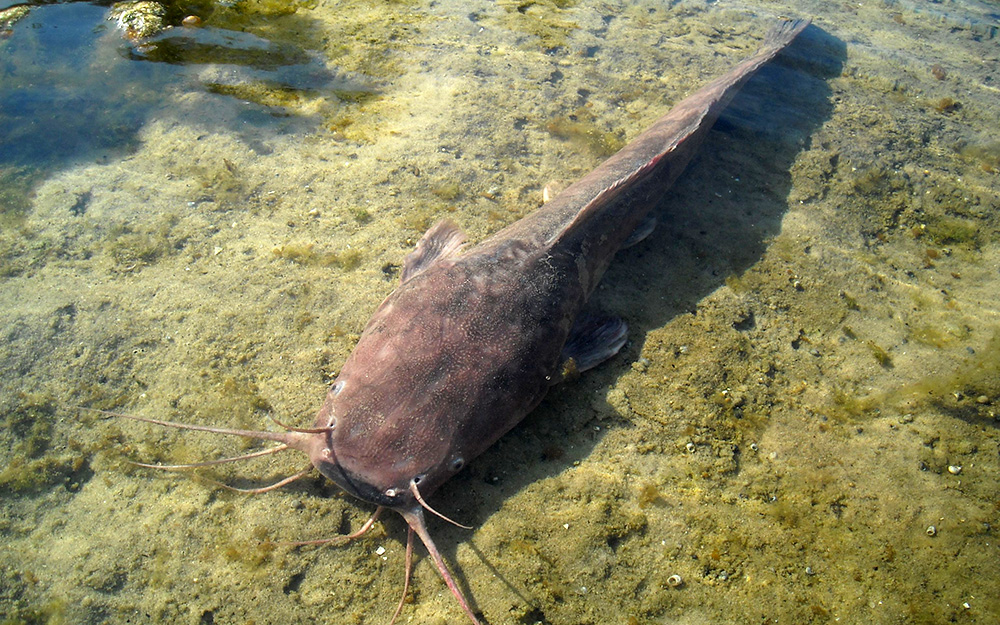African mudfish
(Clarias anguillaris)

Classification
General data
Very common in inundated areas. Bury themselves in the mud when the pools are drying up. Feed mainly on fish and mollusks; also crustaceans, diatoms, detritus and bottom organisms. Omnivorous and reproduction takes place in the rainy saison.
Max. size: 100 cm, 7 kg
Distribution
Africa: lower and middle Nile; Chad system including the Logone and the Shari rivers; Niger and Benoue river systems; coastal rivers of Benin, Togo, Ghana and Côte d’Ivoire; Gambia and lower Senegal rivers; Volta system; relict populations occur in Mauritania and southern Algeria. Also in the lower Cross in Nigeria.
Short description
Dorsal spines (total): 0; Dorsal soft rays (total): 60-82; Anal soft rays: 42 - 61. Diagnosis: 16-50 gill rakers on first gill arch (much more reduced compared to Clarias gariepinus), subject to geographical variations.
Head oval-shaped to rectangular in dorsal outline; snout broadly rounded; eyes rather lateral in position and, together with relatively broad head, make for a relatively large interorbital distance; number of gill rakers on first branchial arch subject to much variation, 16-40, rarely exceeding 40
Dorsal fin base situated close to occipital process; dorsal fin always terminates before caudal fin base, distance between both small; anal fin originates closer to caudal fin base than to tip of snout, nearly reaching caudal fin but never confluent; pelvic fin base slightly closer to tip of snout than to caudal fin base, reaching base of first anal fin rays; pectoral fin extend from operculum to base of first dorsal fin rays.
Pectoral spine slightly curved and robust, serrated only on its outer side, number of serrations increases with increasing standard length.
Lateral line appears as a small, white line running from posterior end of head to middle of caudal fin base. Openings of secondary sensory canals (flank neuromasts) clearly marked, showing a regular pattern.










